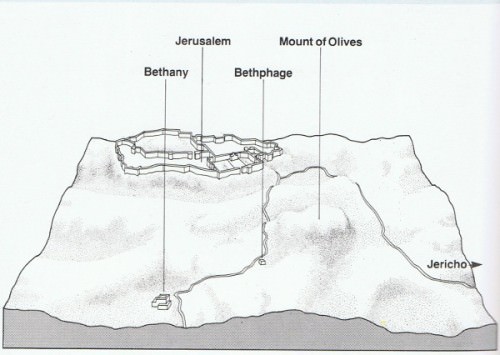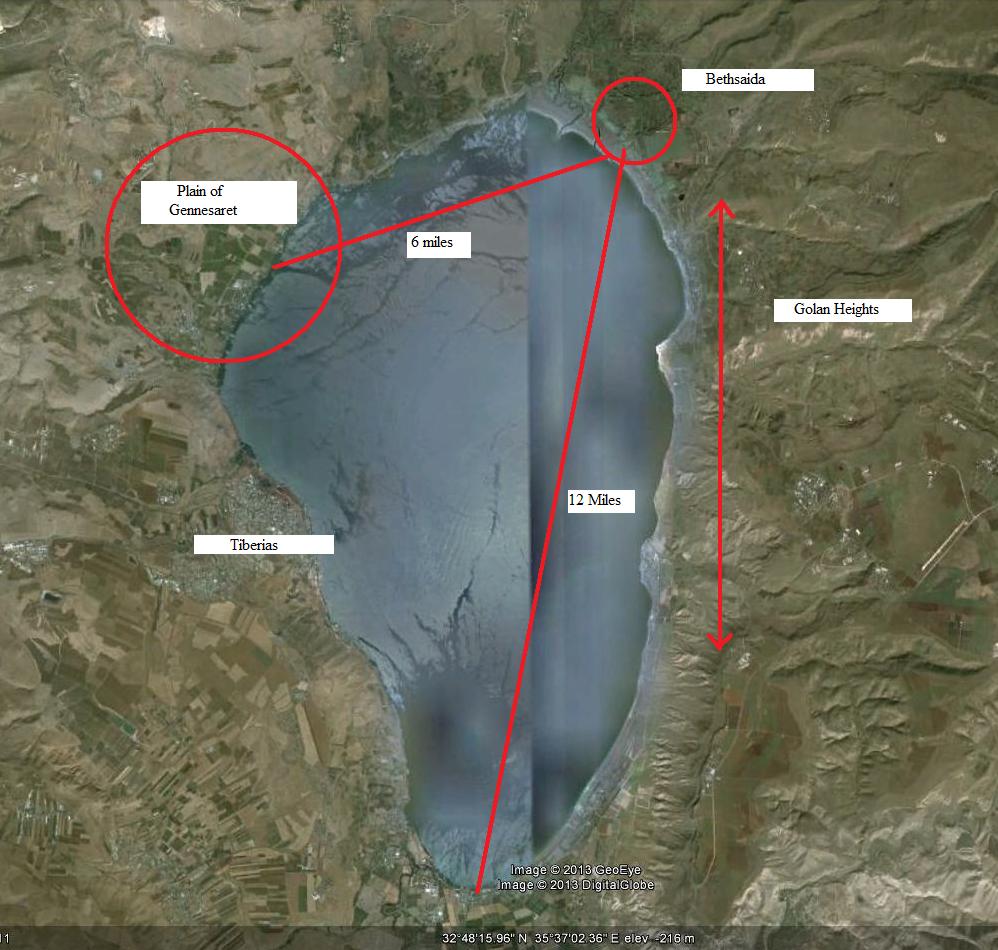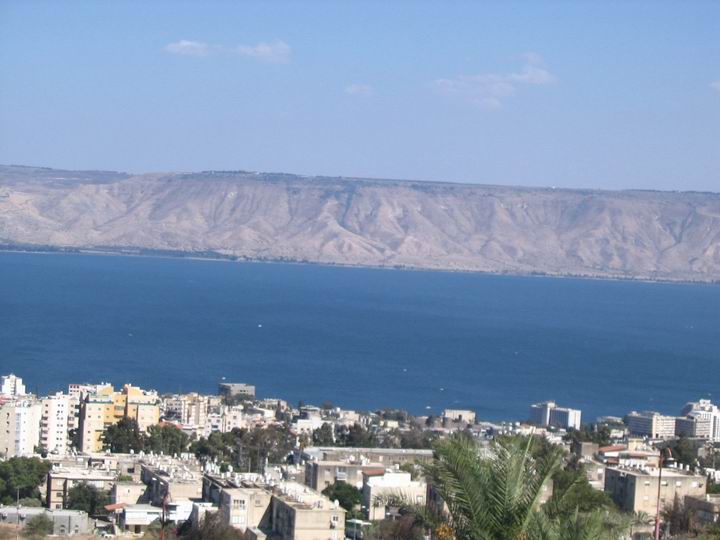
 |
Freethought & Rationalism ArchiveThe archives are read only. |
|
|
#71 | |
|
Banned
Join Date: Oct 2003
Location: Alaska
Posts: 9,159
|
Jesus is in Jericho, just prior to Mark 11:1, and we read that:
Quote:
 The order is also given in the manner you would encounter them if making a wrong turn and skipping Jerusalem by accident. Matthew removes the reference to Bethany. I guess the strategy is to limit the damage but not reject the text of Mark altogether. It is also instructive that these incidents are motivated not by things that happened, but in this case the need to get a Hebrew Bible prophecy fulfilled with the colt. There are a lot of such incidents and Jesus just moves from place to place as a rhetorical device to separate his fanciful doings. |
|
|
|
|
|
#72 |
|
Banned
Join Date: Oct 2003
Location: Alaska
Posts: 9,159
|
 Wow, Mark is confused! Above we have an arrow drawn on what appears to be the intention through Mark of moving Jesus from Tyre on the coast to the Sea of Galilee, on south to eventually arrive in Jerusalem. We've already seen the gross error from Tyre to Sidon and the mistaken impression regarding the location of the Decapolis. But in Mark 6 we have Jesus crossing the Sea of Galilee into the land of Gerasa, which is 30 miles south of the Sea ... This is in the middle of developing the narrative of feeding the multitudes but geographically he apparently reverses course next, and heads north, to Behthsaida and Gennesaret. One is on the Northeast shore of the Sea and the other is on the Northwest shore. Between the two Jesus walks on water because he's been up in the hills and the boat is out on the Sea catching some fearsome waves. So old JC walks out on the sea to get back in the boat and calm those fearful disciples. He certainly has good vision, being able to see so many miles from the hills on one side of the Sea to a boat out in the middle. In all it looks like we have an author that has a very rough idea of what general region various cities lie in, and an objective of getting Jesus from the far north of Judea to the South, especially Jerusalem. But he mixes up the specific locations of regional cities vis-a-vis one another, resulting in numerous nonsensical contradictions. |
|
|
|
|
#73 |
|
Banned
Join Date: Oct 2003
Location: Alaska
Posts: 9,159
|
This is a google map with notations of important place-names around the Sea of Galilee:
 The most important geographic feature is the city of Tiberias on the mid-western flank of the Sea. The Sea of Tiberias is another name for Sea of Galilee because this was the capital city of the Galilee. The ancient city of Hammat preceded Tiberias as a hot springs, known far beyond the region as a place of healing. Herod Antipas, son of Herod the Great was the Roman client King in this region, with Palace in Tiberias. He was appointed in 4 BCE by the Emperor and ruled until 39 CE, so this is the most important ruler of the most important city of Gallilee. Exactly during Jesus' meteoric rise to fame. What is most important to us is that in the Gospel of Mark, despite all of his spectacular achievements in Galillee - Jesus never arrives in Tiberias, and does not come to the attention of anyone there. He criss-crosses the Sea of Tiberias numerous times and is famous throughout the land for his healings, his feeding of the multitudes, walking on water, sending his 12 disciples out to do miracles in his name, two thousand pigs into the sea - and nobody notices. Observe how small this area is. The Sea is roughly 12 miles across from the southern boundary to one place named by Mark - Bethsaida. What is important about that place is that nobody really knows where it is. Isn't that an amazing coincidence that the place Jesus fed five thousand people can't actually be located? Further, his landing at Gennesaret is also not even a city. This is the exact opposite of what you would expect logically in order for the fame to match the geographical reality of Galilee - Jesus does not appear at the one well known city, and instead appears at places where nobody can be called upon to remember him being there. Most incredible of all is that Jesus is most famed for healing, and the one place where sick people went for healing was the baths at Tiberias. And Jesus lands within a few miles of those Baths at the plain of Gennesaret, from there traveling all around gathering fame for healing... but not the healing center itsdelf that we can literally see from Gennesaret. Here is a picture from mount Arbel, just South of Tiberias, looking North across the plain of Gennesaret (you can see Tiberias below, now population 40,000):  Looking to the East from the City of Tiberias, we can see the Golan Heights on the East shore (note the boats out on the water - Jesus is going to see his disciples in one of those, in the dark):  Let's look at Mark's narrative to see how much sense it makes. Jesus comes from the north, by way of Sidon, and crosses the sea to the south, but to the Gerasenes which are 30 miles too far south. He casts the demons out of a man and into two thousand pigs which rush into the sea. Then Jesus crosses over again to the other side, where a great multitude is awaiting. Mark 5:21 doesn't tell us a place name. But he brings back a 12 year old from the dead, the daughter of a synagogue ruler, and heals a woman who touches his garment. Multitudes supposedly greet him when he arrives, but the only place with multitudes is... Tiberias. Then Mark 6:1 says Jesus went into "his own country" with his disciples. Jesus travels to all the villages around, preaching and healing, and sends the 12 out to do more of the same. There is an interlude, a long story about Herod executing John the Baptist. What is so strange about this is that the text seems to implicitly acknowledge the need of mentioning Tiberias without using the name, since that is where Herod's Palace is. Yet, neither Jesus nor the disciples travel there specifically. The story does not mesh with any of the actual activities or travels of Jesus and his disciples. It stands out instead for how it clashes with what is going on geographically in the story. After John the Baptist is executed, the 12 disciples gather for a conference with Jesus, although where is not worthy of mention. But they get into a boat, and the people see where they are going. So in Mark 6:32 the people rush to get there before they arrive. This is where the five thousand people are fed with 5 loaves and 2 fish. The only place on Galilee that could field that many people is... Tiberias. I tried to get population numbers but could not, even sifting through Josephus' Jewish Wars. Josephus conquered Tiberias in the Jewish Wars, as he was re-claiming Galilee for the Jews instead of those Empire sympathizers in Tiberias. Mark is confusing here in 6:45 because he sends his disciples to Bethsaida in a boat whilst Jesus stays back with the crowd in this desert place to order them dispersed. Then Jesus goes to a mountain to pray. It is either the Golan Heights, or Mount Arbel. Well, neither since it is fantasy but geographically speaking it would have to be one of those. When evening comes, the boat was out at sea while Jesus is on land. In the dark, Jesus can see the disciples in trouble out on the rough water and walks upon the water to meet them and calm the sea. This sure is a lot to put into one day, isn't it. I'd be a little tired just hiking up and down the mountains in the picture above. In Mark 6:53 they cross the Sea again and land at Gennesaret, a longer day still! He is so famous that people are carried in their beds from far and wide, presumably from Tiberias, to be healed by Jesus. Despite Jesus being within eyeshot of Tiberias, being in no town himself but instead out in the agricultural plain of Gennesaret, people are carried from the most famous healing center in Judea on their beds out into farm country. Josephus tells us how rich the land is out there. But how much sense does this make? None at all. The upshot of studying the geography is that the author of Mark had Jesus criss-crossing the Sea of Galilee avoiding the one place that could field the very multitudes he supposedly gathered. That place was the center for healing, famous for many centuries prior, a capital city at that - and supposedly Jesus is doing stupendous amounts of healing. Instead of Jesus traveling to Tiberias, the sick residents of Tiberias travel to him out amongst the farm fields. This adds a lot of evidence in favor of Mark being a literary construct that is careful about creating a legend that cannot be verified in the only place that could logically serve as verification. You cannot start a legend about Jesus appearing in Tiberias because there will not be any memory of him having been there amongst descendents of the multitudes he supposedly fed or healed. |
|
|
|
|
#74 | |
|
Veteran Member
Join Date: Sep 2004
Location: Birmingham UK
Posts: 4,876
|
Tiberias was a problematic place for Torah observant Jews because it was built partly on an old graveyard. Josephus Antiquities Book 18
Quote:
Andrew Criddle |
|
|
|
|
|
#75 | |
|
Veteran Member
Join Date: Feb 2005
Location: Atlanta
Posts: 2,060
|
Quote:
'In the fifteenth year of Tiberius Caesar Christ Jesus vouchsafed to glide down from heaven, a salutary spirit.' Jake |
|
|
|
|
|
#76 | |||
|
Veteran Member
Join Date: Sep 2003
Location: On the path of knowledge
Posts: 8,889
|
Quote:
Quote:
Come the eighth day all have bathed and are ritually 'clean' again. right? (Num 19:11-12 The extreme case, actual physical contact with a dead body, yet the person is ritually 'clean' again in only seven days.) Or isn't 'seven days' really -seven days- in this ritually 'unclean' status? If the count of days for the restoration of things 'unclean' to 'clean' The Law specifies are not actual days, and a count of the 'seven days' really means forever, Then what does that do to the day count for any other ritual for removing 'uncleanness' ? Or for any of those many other 'seven day' counts that are repeatedly specified in the Law? The Laws regarding ritual 'uncleanness' are not for the duration prescribed by the Law? but are permanent? Either the Law is screwed, or these peoples heads are. |
|||
|
|
|
|
#77 | |
|
Contributor
Join Date: Feb 2006
Location: the fringe of the caribbean
Posts: 18,988
|
Once we deduce that there was NO actual character called Jesus then the early Jesus cult was based on stories whether orally or written.
Based on Philo, Josephus, Tacitus and Suetonius there was NO Jewish Messianic ruler called Jesus, in fact, Vespasian was considered the Messianic ruler predicted in Jewish writings Now, manuscripts of the stories of Jesus have been found and dated to the 2nd century and the vast majority of these manuscripts have been located in Egypt. Egypt must be included in the Geography of Christianity. The NT manuscripts found in Egypt are effectively artifacts of the EARLY Jesus cult. In the early stories of the Synoptics--Jesus came from Egypt AFTER leaving Bethlehem. In "Against Celsus" it is claimed that Jesus became a Magician in Egypt and then returned to his homeland. Against Celsus 1 Quote:
The Geography of the Early Jesus cult must include Egypt. It is completely astonishing that almost all of the written Artifacts of the Early Jesus cult are found in Egypt yet it is claim the Jesus cult originated in Judea where NOT even a WORD about Jesus was found in the DSS. The actual Physical Evidence, the collected and dated manuscripts of the Jesus stories, place the EARLY Jesus cult in Egypt. The ARTIFACTS found in Egypt must be the Smoking Gun. The Artifacts are DIRECT EVIDENCE of the Geographic location of the Early Jesus cult. If the EARLY Jesus cult was NOT originated in Egypt then we would NOT expect to find ARTIFACTS of the earliest stories of Jesus in the same location. |
|
|
|
|
|
#78 | |
|
Contributor
Join Date: Feb 2006
Location: the fringe of the caribbean
Posts: 18,988
|
I was just re-examing gMatthew and came across this passage.
Matthew 2 Quote:
The Septuagint, the Greek version of the Hebrew Bible, is from Egypt. The Earliest stories of Jesus are written in Greek. The earliest stories of Jesus relied on the Greek Septuagint of Egypt. [Isaiah 7.14 in gMatthew is the Greek version] The earliest stories of Jesus have been found in Egypt. The EARLY Jesus cult must have been or most likely originated in Egypt. |
|
|
|
|
|
#79 | |
|
Banned
Join Date: Oct 2003
Location: Alaska
Posts: 9,159
|
Quote:
Josephus tells us this city was largely inhabited by Jews. In Jewish Wars I think I recall there being some 600 men serving as their "senate" so this was a large city. Josephus outsmarts them by seizing over two hundred vessels in the Sea, manning them with only four men each, and convincing the inhabitants an armada is about to invade with a stupendous army. That was how he took the city. Note that in Mark Jesus actually never travels to any existing city on Galilee at all. It isn't just that he avoids Tiberias. He avoids Capernaum too, on the Northern shore which was the second largest city on Galilee at 1,500 people. There isn't enough people in the entire city to fill a fraction of the multitudes he fed on the five loaves somewhere nearby. So it isn't just that Jesus avoids the most logical place, Tiberias - he avoids every known city on Galilee altogether. Despite traveling to all these villages on Galilee! Bethsaida is mentioned but nobody can actually find such a place. Gennesaret is a plain, not a city. He does of course mention a city (Gerasa) that is 30 miles south of the Sea, which Matthew changes to Gedara. Both of those are largely Greek in contrast to Tiberias so that is a curious fact. I am not familiar enough with Egypt yet to comment aa5874. There is no intention on my part of overlooking it, and indeed I am interested. |
|
|
|
|
|
#80 | ||
|
Contributor
Join Date: Feb 2006
Location: the fringe of the caribbean
Posts: 18,988
|
Quote:
Matthew 9 Quote:
|
||
|
|
| Thread Tools | Search this Thread |
|